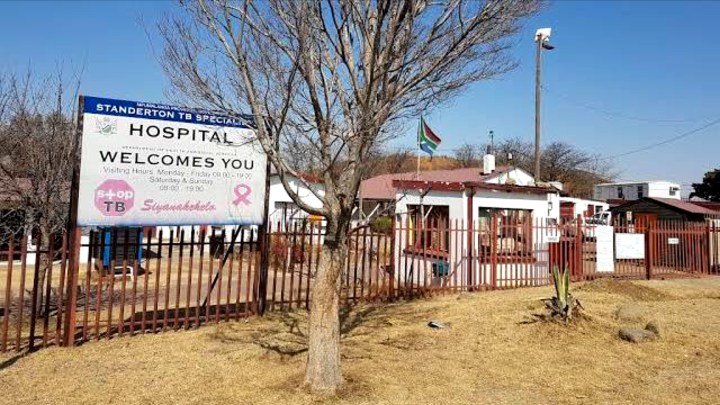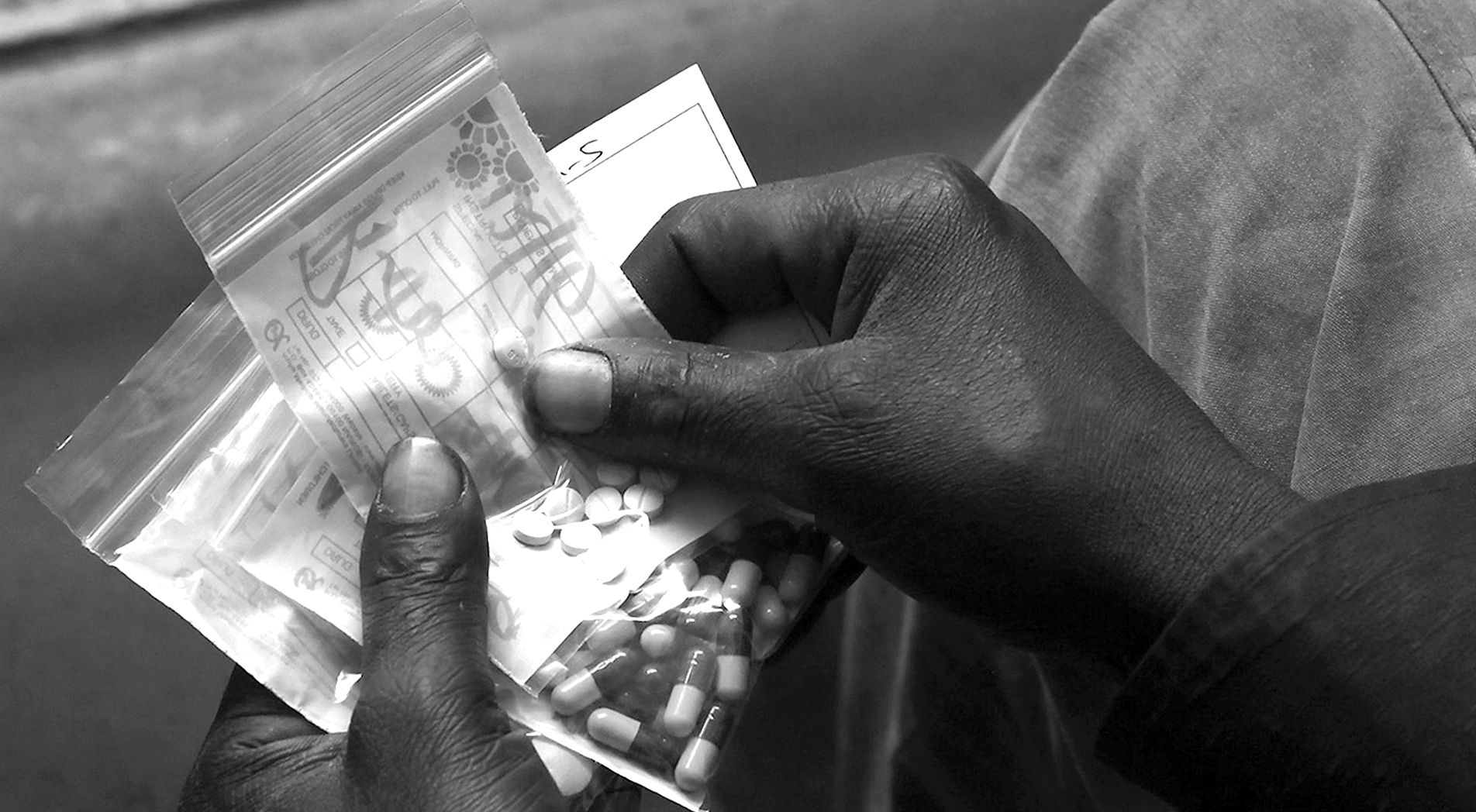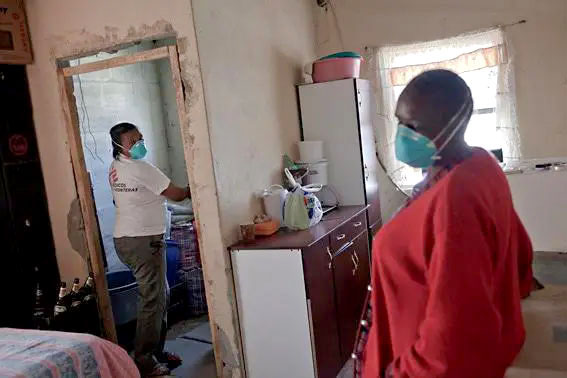SPOTLIGHT
Why Mpumalanga is repurposing some TB hospitals and how it will streamline service for patients

The Mpumalanga Department of Health is planning to repurpose several TB hospitals as a result of declining in-patient numbers. Nthusang Lefafa asked the department what prompted this and what it means for the TB response in the province.
The Mpumalanga health department plans to repurpose three of its five tuberculosis (TB) hospitals due to dwindling numbers of in-patients at these hospitals.
The hospitals — Bongani TB Hospital and Barberton TB Hospital in the Ehlanzeni district and Standerton TB Hospital in the Gert Sibande district — will now be used for other medical services, says provincial health spokesperson Dumisani Malamule.
A former doctor from the Barberton TB Hospital who spoke to Spotlight on condition of anonymity due to fear of reprisal, says the repurposing process makes sense economically but a well-thought-out plan on how the facilities will be utilised following closure is needed. “The repurposing makes clinical and even health economic sense,” he says. “But, the issue is — what to do with the TB facilities. The [repurposing] process would continue to make health economic sense if there is a well thought out plan of what to do with the facilities after they are closed.”
Malamule described the project as “a work in progress”. He says Standerton TB Hospital will be used as an archive building for medical records.

Most people with TB are thought to become non-infectious within a few weeks of starting treatment. (Photo: EPA / Daniel Irungu)
Decentralising TB services
Malamule says Barberton and Bongani TB Hospitals are closing in compliance with a policy framework on decentralised and deinstitutionalised management of multi-drug resistant TB (MDR-TB) that was introduced by the National Department of Health in 2011 and amended in 2019.
In an article co-authored by Dr Norbert Ndjeka, who leads the national health department’s TB programme, the authors describe decentralisation as an approach to bring TB services closer to communities with screening, testing, and treatment where people live. Decentralisation of TB services, the authors write, has “produced better treatment outcomes for DR-TB patients in South Africa and helped reduce cost of DR-TB care”.
Malamule says the provincial department has decentralised DR-TB care, which means that all screening and initiation of TB patients on treatment is done at clinics and district hospitals. Critically ill patients are admitted to other hospitals across the province.
Before the change in policy in 2011, people with DR-TB were often hospitalised for six or more months, often against their will. In 2008, DR-TB patients escaping from TB hospitals in South Africa made headlines around the world. Critics of forced hospitalisation argued that it discouraged people from seeking help and that there weren’t nearly enough beds for everyone with DR-TB, something that would both limit the efficacy of the approach in preventing infections and would make it hard to justify forced hospitalisation of some people with DR-TB and not others. The risk of transmission was also thought to be very high in some TB hospitals.
Most people with TB are thought to become non-infectious within a few weeks of starting treatment.

Tuberculosis medication. (Photo: Nasief Manie / Spotlight)
According to Malamule, the Mpumalanga health department’s decision to repurpose the TB hospitals also followed developments like the introduction of shorter treatment regimens. The standard duration of DR-TB treatment has over the last decade been reduced from 18 or more months to six to nine months. The treatments have also become more effective and the risk of severe treatment side effects, such as hearing loss, have been dramatically reduced.
What healthcare workers say
Meanwhile, acting provincial secretary for the Democratic Nursing Organisation of South Africa (Denosa), Thulani Masombuka says healthcare workers at the TB hospitals welcome the repurposing process because they felt that the facilities were underutilised.
He says that nurses at the three TB hospitals were complaining that there was no work for them and that in some cases nurses in TB hospitals far outnumbered patients. “The nurses would then complain saying that they have no work and they feel redundant,” he says.
Masombuka says the repurposing of the TB hospitals was announced by the provincial health department about two years ago and there was a consultative process with healthcare workers and union representatives.
“Last year in September, a departmental circular was issued where nurses and doctors were given an option of which health facilities they want to go and work. This process,” he tells Spotlight, “was concluded around November last year and they are currently working at their new health facilities.”

Community healthcare workers are key in decentralising TB services closer to where people live.
(Photo: Médecins Sans Frontières)
Masombuka says that the province is doing well in its TB response and the repurposing of the specialised TB hospitals will not affect this. He says patients who need to be admitted for TB treatment will be referred to other hospitals across the province.
The doctor agrees.
“The primary reasoning behind the move is that the treatment of complicated TB (MDR, XDR) has become increasingly simplified so that such patients did not need to necessarily be managed in a specialised TB facility,” he says. “They could be treated as the normal TB patients in regular hospitals. Regular hospitals only need to incorporate the protocols of specialised TB hospitals in their context — plus update their personnel skills.”
DR-TB in Mpumalanga — a timeline
Based on data in the department’s Strategic Plan 2020-2025, Mpumalanga has been performing better than average when it comes to DR-TB treatment. In 2017, Nkangala, for example, had a DR-TB treatment success rate of 60. 2%, which was above the national rate of 53%. Also, in the 2018/19 financial year, the report states, the DR treatment success rate in Ehlanzeni was 61.7%, above the national average of 49.6% for that year.
Visit Daily Maverick’s home page for more news, analysis and investigations
The report focuses on data only up to 2018.
Findings from a study published in 2021 following a spatial analysis done to check for MDR-TB in Mpumalanga between 2013 and 2016, provide some insight into DR-TB in the province over the years. The findings show clear MDR-TB clustering in the province across the three districts. 4,204 people with MDR-TB were surveyed from four TB facilities.
“The total number of MDR-TB patients increased between 2013 and 2015 (884–1,139). Barberton hospital had the highest number, with 1,252 patients. However, a reduction of 6% was observed between 2015 and 2016,” the researchers found.
For the four-year period and based on StatsSA population estimates, the MDR-TB combined incidence for the entire province was calculated to be 93.1 cases per 100,000 people. Ehlanzeni had the highest incidence with 110.5 cases per 100,000, followed by Gert Sibande with 104.9. Nkangala district had the lowest incidence with 58.5 cases per 100,000 people.
Much of the provincial department’s TB efforts have since been concentrated in Ehlanzeni.
By 2017, the District Health Barometer flagged Mpumalanga as having the highest rate of MDR-TB of all provinces — then recorded at 7.8% of all TB cases in the province. In the same year, the Mpumalanga health department adopted its Provincial Implementation Plan (PIP) for the National Strategic Plan on HIV, TB and STIs 2017 – 2022.
Spotlight published an analysis of this plan in 2019.
The department back then acknowledged that “inaccessible TB treatment services due to drug stockouts, inadequate care provision, and poor adherence models” were behind the province’s high mortality and morbidity rates and outlined the plans to address this in the PIP. “Testing for TB,” the department said in the PIP, “will be intensified at facility level to amplify TB case finding in high-burden areas such as mines, correctional services, mining communities, etcetera. A provincial drive to promote household symptom screening and the use of a combination of Xpert MTB/RIF and culture tests will be initiated. Ward-based outreach teams will be used to initiate TB.”

An X-ray of a tuberculosis lung. (Photo: iStock)
In the plan the department also set out to find “90% of all TB cases and place them on appropriate treatment”, to get “more than 90% of TB suspects tested for TB and “100% of contacts of TB clients tested for TB”. On treatment, the target was to successfully treat at least 90% of those diagnosed with TB (75% for DR-TB). The target is also for a 90% treatment success rate for drug-sensitive and at least a 65% treatment success rate for multi-drug resistant TB.
Latest figures
According to Malamule, 90% of people who visited health facilities in the province last year were screened for TB.
He says the drug-sensitive TB (DS-TB) treatment success rate in Mpumalanga stands at 81%. This means that, on average, 8 out of 10 TB patients in the province are treated successfully. He says the 2021 cohort report will be complete in April 2023.
He also notes a decline was observed in the number of patients initiated on treatment, but the DR-TB treatment success rate has significantly improved from 54.2% in 2019 to 66.9% in 2020.
Currently, Malamule says, Ehlanzeni is the best-performing district in the province when it comes to finding undiagnosed TB patients, its TB success rate, and TB loss to follow-up rate. The department’s interventions in Ehlanzeni are supported by the Global Fund for Aids, TB, and Malaria and the United States President’s Emergency Plan for Aids Relief (Pepfar) — which includes technical, human resource, and medical equipment support.
On access to medicine, he says, TB medicines are available across all facilities and there have been no TB drug stockouts during the second quarter of the 2022/2023 financial year.
“New, better, and shorter TB regimens were introduced in Mpumalanga last year like the DR-TB shorter regimen, which has seen improved DR-TB outcomes,” he says.
He says 47 children in Mpumalanga are currently on a new paediatric TB formulation and the department is piloting shorter TB preventative therapy in Ehlanzeni district (three months as opposed to six or more).
Malamule says the province has invested in human resources for TB and created posts for provincial, district, and sub-district TB managers and coordinators. He says these posts are financed through the HIV and Aids / STI / TB (Hast) conditional grant.
“During the second quarter of the 2022/2023 financial year, Mpumalanga’s health department filled all district TB coordinator posts. 15 of 17 sub-districts have appointed TB coordinators with the exception of three sub-districts — that of Mbombela, Govan Mbeki, and Victor Khanye being vacant due to resignation and promotion to the next level.”
In line with bringing TB services closer to communities, especially rural communities, Malamule says the provincial health department has three movable testing units (Digital chest X-ray) stationed in the Ehlanzeni District. This is made possible through a public-private partnership with a company called Aquity Innovations.
“Two containers are currently stationed at Naas and Matsulu Clinics and are rotated according to the need in between sub-districts. One mobile X-ray machine is fitted in a mobile kombi roving around the district during community outreach campaigns but is stationed in the Bushbuckridge sub-district,” says Malamule.

The Covid-19 pandemic has affected Tuberculosis
targets across provinces. (Photo: GCIS / Spotlight)
Challenges remain
Last year during her budget speech, health MEC Sasekane Manzini said prevention and management of TB remain a concern as the department did not achieve all its targets due to the Covid-19 pandemic. She vowed that the department will now “double its effort as it integrates Covid-19 management together with all essential services in facilities and the ward-based PHC outreach programme to ensure they track and trace TB treatment defaulters [sic] and bring them back to treatment as early as possible”.
Malamule says among the challenges are high mortality and loss to follow-up. “This means that some patients who tested positive still fail to remain on treatment. The department is continuously improving strategies to reduce the two negative indicators, including engagements with key stakeholders (patients and traditional health practitioners),” she said. DM/MC
*This article was published by Spotlight – health journalism in the public interest.

"Information pertaining to Covid-19, vaccines, how to control the spread of the virus and potential treatments is ever-changing. Under the South African Disaster Management Act Regulation 11(5)(c) it is prohibited to publish information through any medium with the intention to deceive people on government measures to address COVID-19. We are therefore disabling the comment section on this article in order to protect both the commenting member and ourselves from potential liability. Should you have additional information that you think we should know, please email [email protected]"





 Become an Insider
Become an Insider